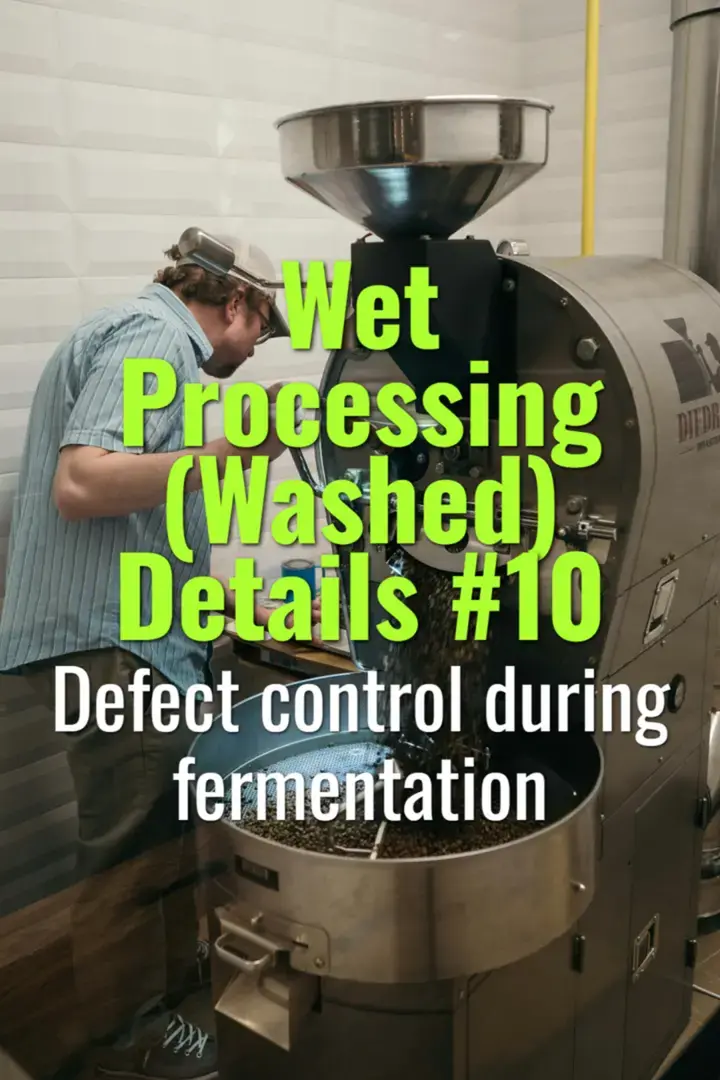Defect control during fermentation
This topic explains the common defects that can occur during coffee fermentation in washed processing, their causes, and the management practices that prevent them.
- Coffee Basics Nerds
- 2 min read
Article 10 of 12 in Wet Processing (Washed) Details/

Why Defect Control Matters
- Fermentation is a delicate biological process where errors can create permanent flavor defects.
- Preventing defects ensures clean, high-quality coffee and avoids losses from downgraded lots.
Common Fermentation Defects
1. Over-Fermentation
- Cause: Beans left too long in tanks or at too high temperatures.
- Symptoms: Sour, vinegary, or alcoholic flavors.
- Control: Monitor time, temperature, and pH (endpoint ~4.2–4.5).
2. Incomplete Fermentation
- Cause: Insufficient time or uneven microbial activity.
- Symptoms: Sticky mucilage remains, leading to dirty cups or mold during drying.
- Control: Regularly check bean texture; ensure proper mixing.
3. Contamination
- Cause: Dirty tanks, unclean water, or mixing of lots at different stages.
- Symptoms: Musty, phenolic, or earthy flavors.
- Control: Clean equipment, use fresh water, maintain separation of lots.
4. Uneven Fermentation
- Cause: Inconsistent mixing, poor tank loading, or irregular cherry quality.
- Symptoms: Cup inconsistency, with both clean and defective notes.
- Control: Stir beans during fermentation; sort cherries carefully at reception.
Key Control Measures
- Monitoring tools: Time tracking, temperature checks (15–30°C), pH meters.
- Sanitation: Clean tanks and equipment daily.
- Sorting: Remove floaters and underripes before fermentation.
- Lot separation: Process different farms/varieties separately.
- Farmer training: Knowledge of microbial activity and fermentation endpoints.
Impact on Cup Quality
- Good control → clarity, sweetness, vibrant acidity.
- Poor control → sour, dirty, or flat cups with reduced value.
Lasting Importance
Defect control during fermentation is essential for protecting coffee quality and economic returns. With careful monitoring and sanitation, farmers can avoid costly downgrades, ensuring that the fermentation stage enhances rather than compromises flavor.